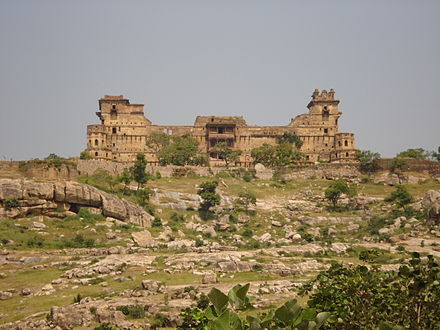Khangar (community)
This article has multiple issues. Please help improve it or discuss these issues on the talk page. (Learn how and when to remove these template messages)
|

The Khangar community are an Indian community. They are referred to by many other names, such as Khangaar, Khungar, Khengar, Khagar, Khangdhar and Rao Khangad.[2]
The community ruled areas of present-day Bundelkhand after the fall of the Chandelas in 1182 A.D. and until the mid-14th century their seat of power was at Garh Kundar, reigned by Khet Singh Khangar.[citation needed]
The Khangars were formerly classified as a criminal tribe under the Criminal Tribes Acts of the British Raj. During the period of the British Raj, when the process of sanskritisation became apparent and the administration attempted to record caste in censuses, the All-India Khangar Kshatriya League campaigned for official recognition as kshatriya.[citation needed]
Classification
The Khangar caste is included in the SC category in Maharashtra, Madhya Pradesh, Chhattisgarh, Jharkhand and Rajasthan[3] and the OBC category in Bihar.[4]
References
- ^ Schwartzberg, Joseph E. (1978). A Historical atlas of South Asia. Chicago: University of Chicago Press. pp. 21, 147. ISBN 0226742210.
- ^ Singh, Kumar Suresh (1998). India's communities (People of India: National Series). Oxford University Press. pp. 1684–1686. ISBN 9780195633542.
- ^ "Scheduled Castes in Rajasthan". sje.rajasthan.gov.in. Retrieved 3 November 2023.
- ^ "95 फीसदी खंगार समाज के लोग गरीबी रेखा से नीचे". Amar Ujala (in Hindi). Retrieved 3 November 2023.
Further reading
- Roy, Hareshwar (March 2013). "Popular Legends of Bundelkhand". Research Journal of Arts, Management & Social Sciences. VIII (1): 242–247. ISSN 0975-4083.
